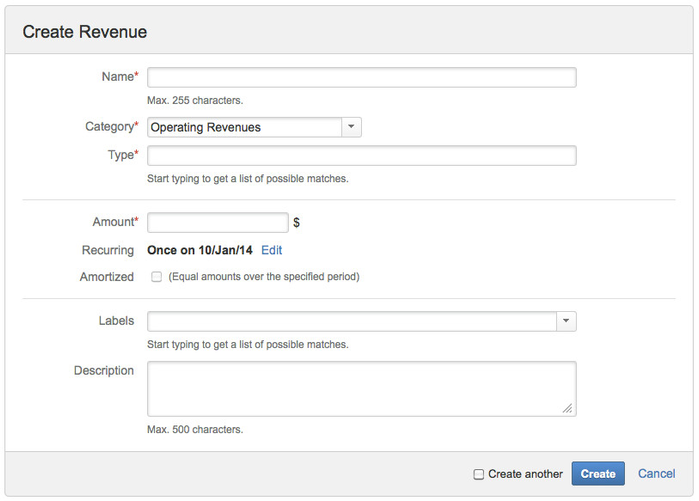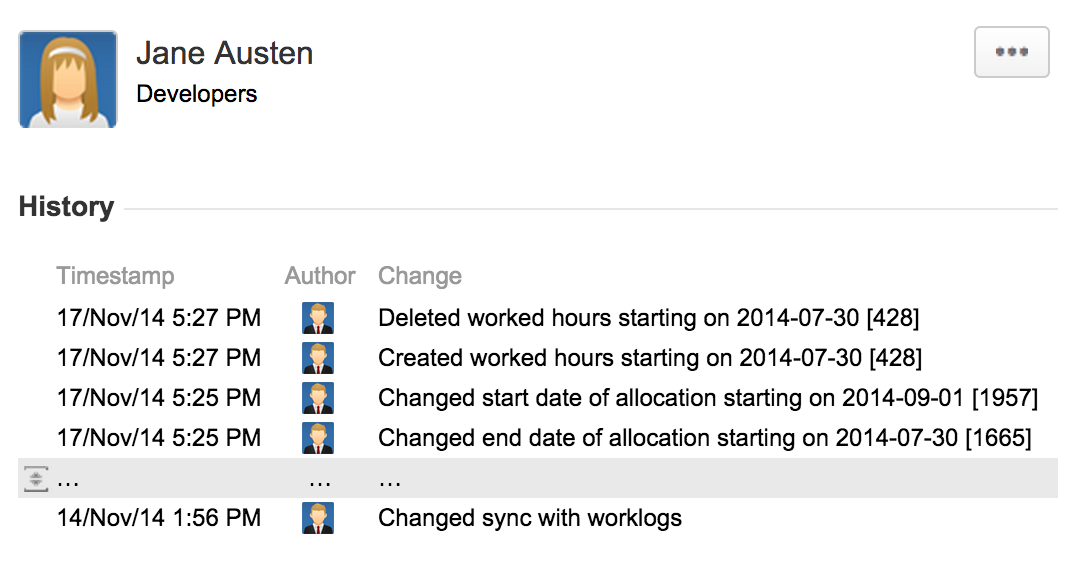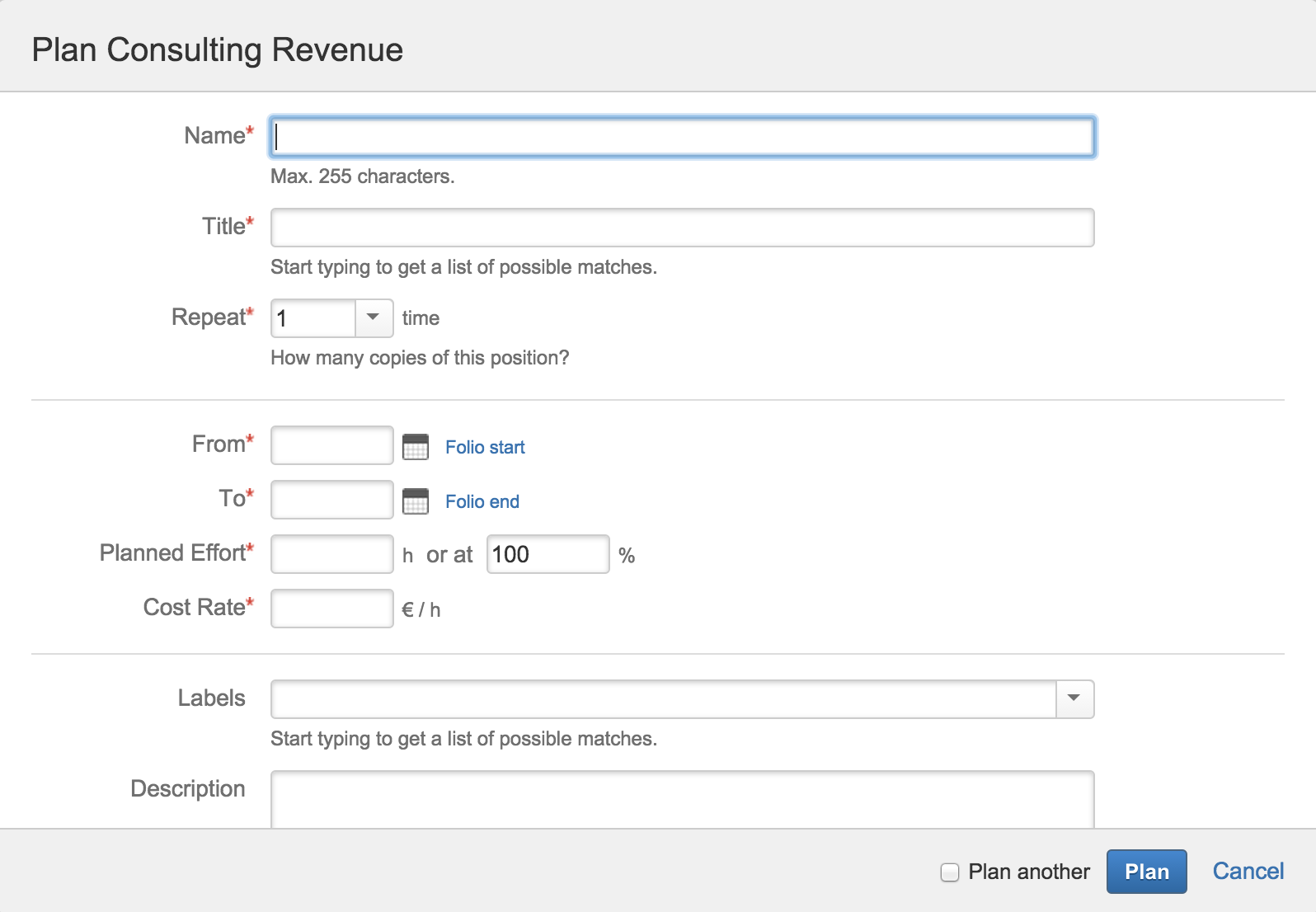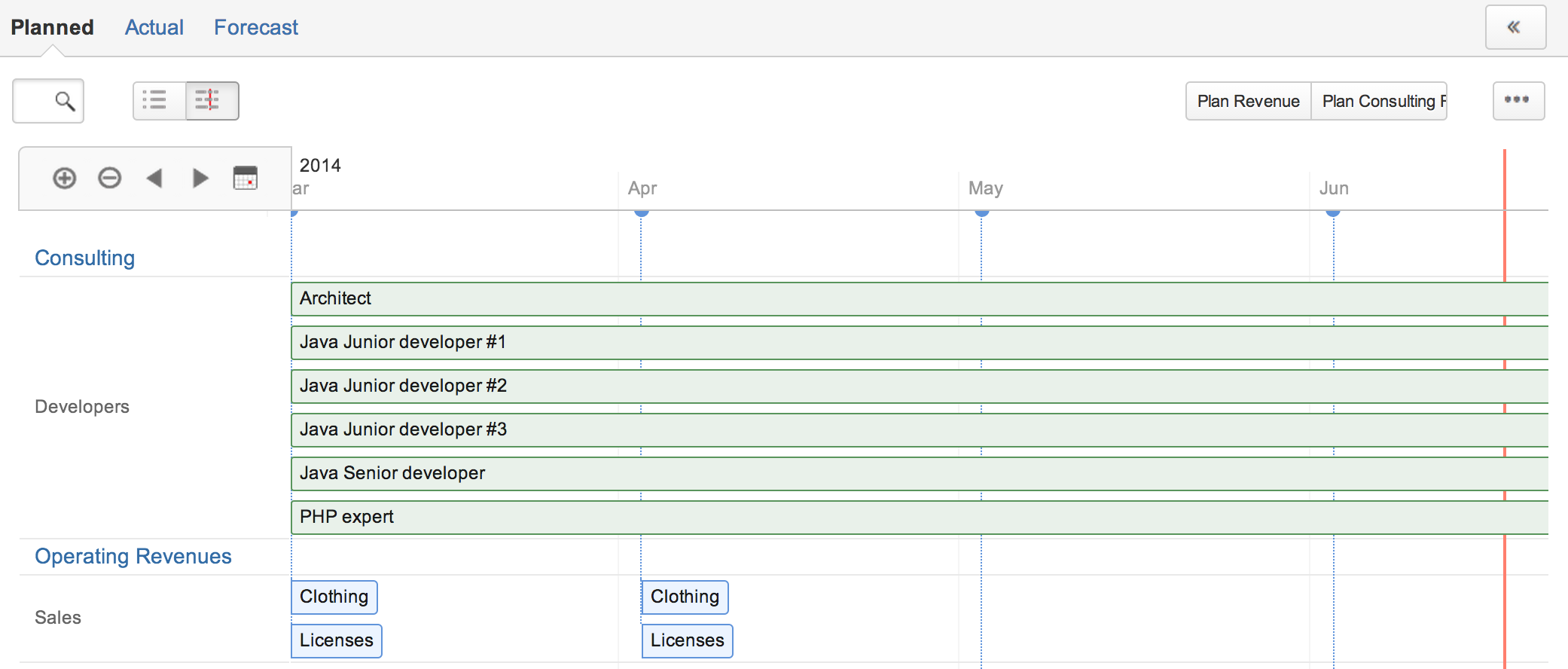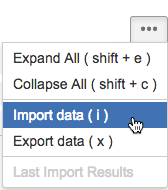The Planned Revenues page allows you to enter all Consulting and Non-consulting revenues you expect the Folio will generate during its lifespan. Non-consulting revenues are added to one of two main categories: Operating or Non-operating. Non-consulting revenues can be single occurrence or recurrent ones. Consulting revenues are the team positions you plan will do work that will be billed and generate revenue, such as Developer #1, Technical Coach #1 , etc. Consulting revenues are categorized as Operating. Information entered here will be used to provide project health metrics on the Overview page and shown as a reference on the Revenues Forecast chart. Planned revenues can be baselined reference and comparing various scenarios. Non-consulting revenuesThe Planned Revenues page shows the planned calculated income for each non-consulting revenue and non-consulting revenue groups (by type). You can collapse (or expand) a group of revenues by clicking the triangle icon ( ) next to the type name. See the Non-Consulting Revenues page for more information and learn how their income is calculated. Planning a non-consulting revenueTo add a non-consulting revenue, either click the Plan Revenue button or hit the a (for add) shortcut key. This brings up the edition dialog. Refer to the Editing an Non-Consulting Revenue section to learn how to fill the edition dialog. Check the Plan another box at the bottom of the dialog in order to create many revenues in sequence.
Select an existing non-consulting revenue to modify by clicking on it and then either click on the ... menu on the top-right part of the details panel (on righthand side of the screen) and select the Edit option or hit the e (for edit) shortcut key. This brings up the edition dialog.
Deleting a revenueSelect an existing revenue to delete by clicking on it and then either click on the ... menu on the top-right part of the details panel (on righthand side of the screen) and select the Delete option or hit the d (for delete) shortcut key. This brings up a dialog to confirm the deletion. Click the Delete button to confirm the deletion, or Cancel link to abort. Deletion is permanent, thus make sure you really want to delete the revenue before proceeding. You can delete multiple revenues at once. Refer to the Multiple Selection to learn how to perform a batch deletion. Attaching files to a revenueYou can attach files to a revenue in order to keep related documents handy (invoices, quotations, etc.). To attach files to a revenue, select it and then click button Attach Files in revenue details panel on the right. This brings up a dialog where you can pick a file (or multiple files simultaneously, if your browser allows it) and enter an optional comment. Viewing Revenue detailsWhen selecting a revenue, more information on that revenue is displayed in the details panel on the right. Note that you can also select multiple revenues at once by selecting multiple lines. This provides you an aggregated view showing the total income associated with these revenues. Searching for revenuesYou can search for revenues by their name using the search box located at the top left of the screen.
FOLIO records all changes that occur on Folios and their data for auditing purpose. When an expense, revenue or team member is selected, the details panel shows a History sub section, quickly accessible by clicking the corresponding icon () in the details panel's navigation bar. The History section displays a table listing all changes that occurred on the selected item and their associated data, such as attachments, wages, allocations and worked hours. Changes displayed include creations, updates and deletions and are sorted from the most recent to the oldest. An update is recorded for each modified field, so a single edition of an Expense can possibly add many rows in the History table. Also, if the table holds more than five entries, then some entries will be hidden by default: click the row showing ellipses (...) to expand the table and show all changes. The History section is visible only to users who can edit the Folio, a.k.a Folio administrators.
Copying a non-consulting revenue to actualSelect an existing non-consulting revenue to copy to actual by clicking on it and then either click on the ... menu on the top-right part of the details panel (on righthand side of the screen) and select the Copy to actual option or hit the t (for to Actual) shortcut key. This will copy the selected revenue to actual, including its attached files. You can copy multiple non-consulting revenues to actual at once by selecting them and then copy the selected revenues the same way you copy a single one. The confirmation message informs you of how many revenues have been copied. Consulting RevenuesPlanned Consulting revenues are the revenues from billed worked hours that the Folio is planned to generate. They are operating revenues. Consulting revenues are grouped by title (e.g. Developer, Architect, Q&A). You can collapse (or expand) a group of revenues by clicking the triangle icon ( ) next to the title's name. See Consulting Revenues for more information Planning a consulting revenueTo plan a consulting revenue, either click the Plan Consulting Revenue button or hit the o shortcut key. This brings up an edition dialog. Check the Plan another box at the bottom of the dialog in order to create many revenues in sequence.
Editing a consulting revenueSelect an existing position to modify by clicking on it and then either click on the drop-down menu on the top-right part of the position details view (on righthand side of the screen) and select the Edit option or hit the "e" (for edit) shortcut key. This will bring up the position edition dialog. For a detailed description of the position edition dialog, refer to Adding a position section. Revenues TimelineThe Timeline View is displayed when the right part of the toggle button located at the top left of the Revenues Browser is pressed . It shows each revenue occurrence as well as consulting revenues over the Folio's timeframe as an interactive timeline chart. Each element displayed for a non-consulting revenue (shown in blue) on the timeline reflects an occurrence for that revenue. Consulting revenues (shown in green) are show as periods, covering the planned activity period for consultant. Timeline charts in FOLIO offer various controls to navigate and focus on certain periods of time. Please refer to the Timelines page to learn more on available ways to interact with the Timeline. All operations described above can be executed directly from the timeline, including edition, deletion, search, multi-selection, etc. Hovering one of the timeline elements shows the date or time period corresponding to that element as well as its summary information, such as its name and planned cost. Import / ExportFOLIO Allows you to import or export your data in CSV (comma separated values) format. Importing Planned RevenuesTo import data from an existing CSV file, click on the ... button and select Import data. Alternatively, you can type the keyboard shortcut i to open the import dialog. See Importing Data from CSV and Planned Revenues Import to learn more about importing Planned Revenues. Exporting Planned RevenuesTo export data to an external CSV file click on the ... button and select Export data. Alternatively, you can type the keyboard shortcut x to instantly export data. Exported CSV file includes all planned revenues. See Planned Revenues CSV Export Detail to learn more about exported data. Approving Planned RevenuesPlanned revenues can be approved using a baselining mechanism. Refer to the Baselines page for more information on managing baselines. | Related pages: |
This is the documentation for an older version of Folio and has been moved to the Tempo instance.
Please view the Folio Category in the Tempo Products Wiki Categories for all versions of Folio's Documentation.
General
Content
Integrations



